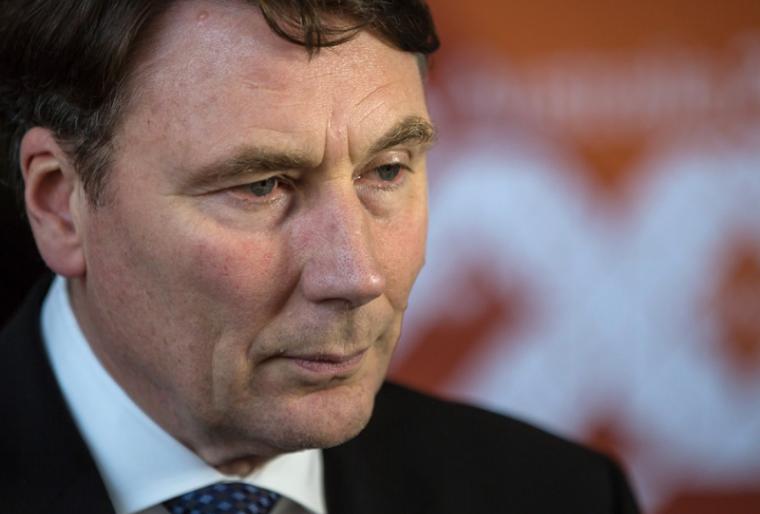The NSW Government has quietly released its David Thodey-led review of its multi-billion dollar Sydney Innovation and Technology Precinct proposal, a document that is big on vision but falls short on detail.
But with Atlassian this week signing on as an anchor tenant for the ambitious 15-year project, the starter’s gun has been fired on the redevelopment of the Central to Eveleigh corridor to become the epicentre of the tech industry in Australia.
ASX-listed property giant Dexus and Singapore developer Frasers have proposals currently being assessed at stage two under the state’s unsolicited proposals mechanisms in which they are seeking to redevelop the towers at Henry Deane Plaza near Central.

These works would create 130,000 square metres of mixed-used floorspace that gets the Precinct redevelopment underway.
Having signed-on to the program at an unveiling with Premier Gladys Berejiklian, Atlassian will now lodge its own unsolicited proposal to government to build its corporate headquarters on a parcel of Transport for NSW-owned land adjacent.
The aim is that this first phase of the new Precinct be ready within five years.
The Sydney Innovation and Technology Precinct panel report says the project needs five anchor tenants signed by 2020. The presence of Atlassian, which has been deeply involved in the background pressing for the creation of a precinct, gives the project with a significant boost.
“Sydney is already the innovation capital of Australia, however our aspiration is to be a global leader,” Mr Thodey says in the report. “To achieve this, we need to act boldly and swiftly.”
“Our analysis has shown that the Precinct has all the unique market drivers, including major innovation technology anchors, culture, location, transportation and walkability,” he said.
The Central to Eveleigh corridor is surrounded by existing research and innovation assets, from the two world class universities, more than 100 research institutes and centres of excellence, the Australian Technology Park with its tenants Data61, the Defence Science and Technology Group and Cicada Innovations, as well as two TAFE schools and the Sydney the School of Entrepreneurship.
The Thodey report paints the grand vision, and an overarching strategy for getting there. While it makes recommendations to government about how to proceed, detail is thin.
The precinct does not lack ambition, but its 15-year horizon will require consistent, unrelenting political and financial commitment.
A primary consideration for the precinct is scale; that its size and ambition and the star-power of its foundation tenants make it a magnet for global talent. The negotiation with the Commonwealth to enable that talent to be able to live and work in Australia is a whole other thing.
It is tremendously positive for the Australian tech industry, and is a marker for the transition of the Australian economy. The fact that NSW has placed a big bet – even if it is being cautious about how it signals that bet – is quite stunning. Certainly it would have seemed unlikely just five years ago.
The government has not specifically responded to the Thodey report recommendations, although the Premier has clear enthusiasm for its ambitions.
The biggest question is perhaps around its governance model. The Thodey report calls for a “leadership body with an independent chair” comprised of a mix of stakeholders predominantly from industry together the universities to govern the Precinct planning and roll-out against a set of agreed metrics.
Still, it is worth taking a moment. Even though the announcement was caught up in the election cycle, the industry should celebrate the commitment.
While there is an element of serendipity about the Atlassian origin story as founders Scott Farquhar and Mike Cannon-Brookes fell into the same University of New South Wales scholarship program before setting up the nation’s largest home-grown tech company, the precinct aims to make such chance ‘collisions’ of talent more likely.
“It’s actually been a bit of an accident that’s brought me here today,” Mr Farquhar said. “It’s a long way from being a boy in Blacktown to running Australia’s largest technology company. And my parents were in service industries, where technology was not on my radar as a job [sector] that I could be a part of.”
“And that needs to change. We need a clearer path from teenagers to technology entrepreneurs and technology workers. It can’t just be chance and serendipity that takes us on that journey,” he said.
“My hope is that this technology precinct is the place where children and students … can come and see jobs in technology and can see the careers that they can have in technology.
“And also where startups can come and rub shoulders with other startups that they admire and the large technology companies that they aspire to be.”
Clarification: An earlier version of this story stated that Dexus and Frasers had been granted stage two approval for their unsolicited proposal to redevelop two towers at Henry Deane Plaza. This is not the case. The companies’ stage two proposal is still be in being considered.
Do you know more? Contact James Riley via Email.

